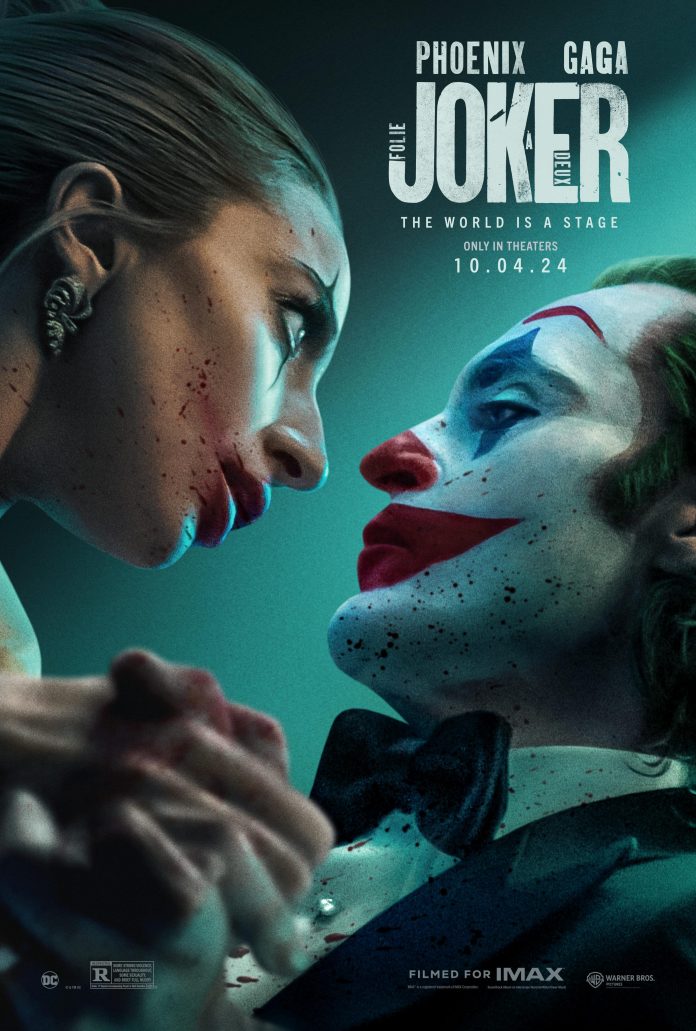Todd Phillips’ “Joker” universe returns to screens with “Joker: Folie à Deux,” a film that, despite its efforts to explore deeper psychological torment, ends up feeling like a grim retread of its 2019 predecessor. This sequel, with much of the original creative team in tow, including director Phillips and cinematographer Lawrence Sher, attempts to expand the introspective journey of Arthur Fleck in Arkham Asylum. Yet the latest “Joker” movie stumbles into familiar territory, weighed down by its nihilistic tone and lacking the same intensity and social relevance that made its predecessor film both haunting and memorable.
In 2019, “Joker” electrified audiences worldwide, partly due to Joaquin Phoenix’s unsettling portrayal of Arthur Fleck. It wasn’t just another dark comic book movie. “Joker” offered a gritty take on Gotham, tapping into societal frustrations and pushing viewers to question the line between hero and villain. The first film’s portrayal of Fleck’s descent into madness, set against the chaotic backdrop of Gotham, felt raw, intentional, and daring.
As viewers fast forward to “Joker: Folie à Deux,” Gotham’s underbelly now takes a backseat to endless hallucinations and dreamscapes, robbing viewers of the city’s grimy, pulsing character that once mirrored Arthur’s fractured psyche.
Visually, “Joker: Folie à Deux” holds to its predecessor’s dimly lit style and muted color palette, delivering wet, desolate portraits of Gotham. However, Gotham’s presence is more hollow this time, with much of the film confined to Arkham Asylum’s sterile interiors. A city filled with socio-political undertones and class divides is reduced to a backdrop for Arthur’s endless inner battles. Gone are the alleys filled with trash, the damp streets crawling with rats and the underlying tension of a city teetering on collapse. Instead, viewers are left with an isolated, interior-focused story where the weight of Gotham’s socio-economic decay barely registers.

The film deviates from its predecessors by incorporating musical elements — a jukebox medley of American classics that punctuates Arkham. Lady Gaga who plays Harleen Quinzel (a.k.a. Harley Quinn), shines in this new setting, imbuing her character with a unique vulnerability. Her dynamic with Phoenix’s Arthur is intriguing, though it suffers from thin writing, lacking the passionate, psychologically complex relationship that fans might hope for. Gaga’s standout performance provides some much-needed freshness, but even her compelling portrayal can’t entirely compensate for the film’s narrative shallowness.
The film tries to delve into Arthur’s psyche as he faces potential execution for his crimes. His trial, his lawyers and Arkham’s abusive guards all offer threads that could anchor a powerful commentary on justice, mental illness, or redemption. Unfortunately, these threads barely surface, as Phillips opts instead for sequences of Arthur singing and dancing, trapped in his haunted mind rather than engaging in a broader narrative. While these musical interludes showcase Phoenix’s raw, almost painfully vulnerable portrayal, they lack the drive needed to push the story forward, leaving it feeling circular and, at times, repetitive.
Despite solid performances and an ambitious attempt to blend musical theater with psychological horror, “Joker: Folie à Deux” ultimately feels like a hollow experience. The initial film’s biting social critiques are nowhere to be found, replaced by a succession of stylized visuals and haunting melodies that struggle to provide substance. Arthur Fleck is not someone who can merely slip into song to express his innermost turmoil, nor can Gotham be distilled into a single asylum where everyone is either a criminal or a guard. This lack of narrative evolution and socio-political depth makes the film’s 140-minute runtime feel stretched and exhausting.
“Joker: Folie à Deux” is, in the end, an elegant but empty reflection of what made the first film resonant. For those craving the grit conflict, and heart-wrenching dissection of Gotham's dark side, this sequel may disappoint. While Gaga’s performance and the film’s atmospheric visuals lend it a certain allure, the story’s unyielding bleakness and refusal to connect with the broader Gotham narrative make the film a melancholic echo rather than a bold progression.




